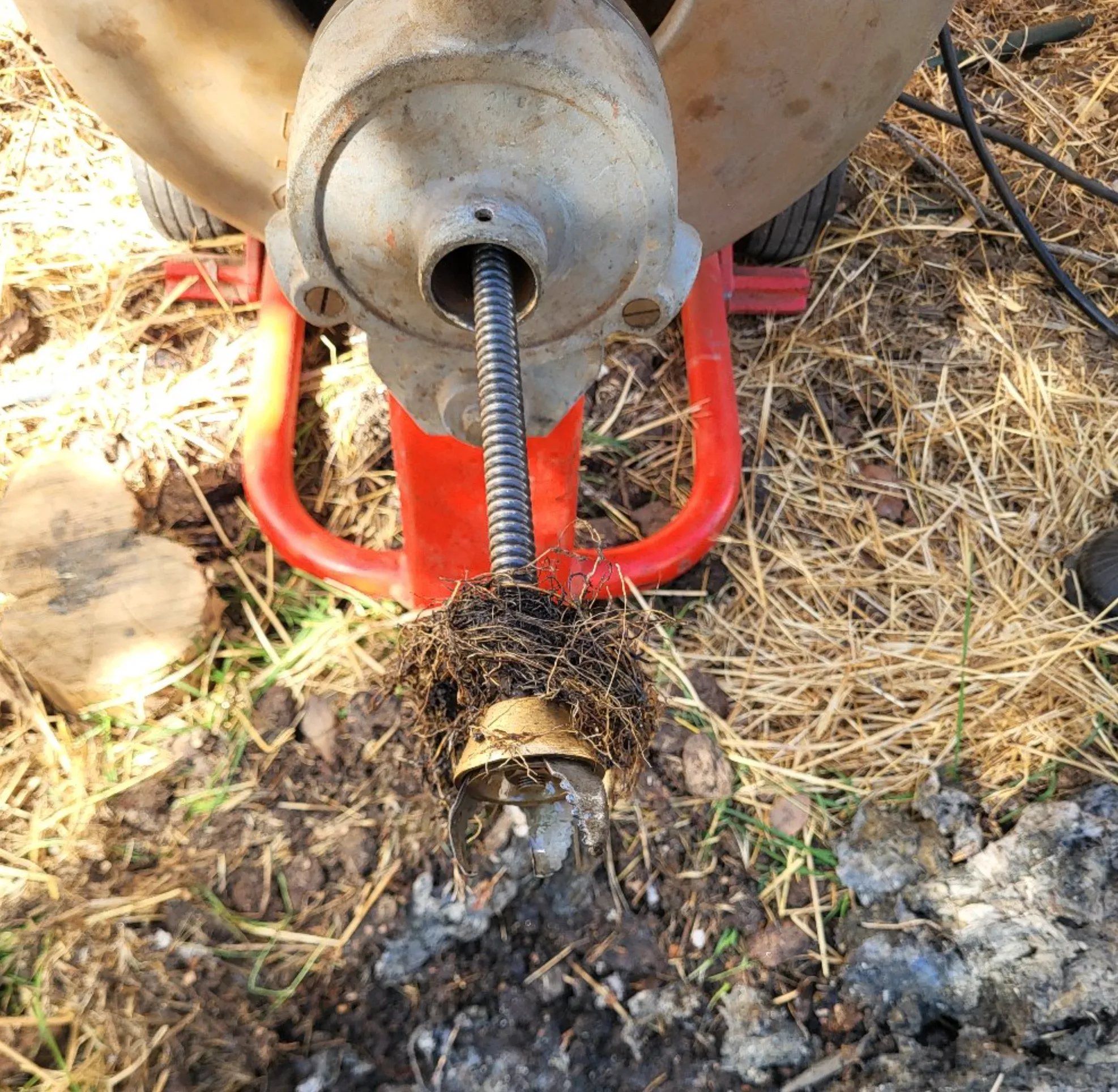You’re standing in ankle-deep water at the end of a shower, watching the tub drain slowly swirl — or not move at all. You’ve tried running hot water. Maybe even poured in some store-bought drain cleaner. But the bathtub still won’t drain the way it should. At this point a lot of people ask the same question:
“Do I really need to snake this bathtub drain… and can I do it myself without wrecking something?”
This guide walks you through both sides of that question. We’ll look at why bathtub drains clog in the first place, when snaking is the right solution, how to snake a bathtub drain safely step by step, and when it makes more sense to call a professional plumber instead of fighting with the drain yourself.

Why Your Bathtub Won’t Drain: The Real Reasons Behind Clogs
Before you decide whether to snake the drain, it helps to understand what you’re actually trying to clear out. Most bathtub clogs aren’t mysterious — they’re a nasty combination of everyday materials that slowly build up until water has nowhere to go.
1. Hair Buildup
This is the number one cause of a clogged bathtub. Every shower sends hair down the drain. Over time, that hair tangles and knots inside the pipe and traps soap scum, grease, and other debris. The result is a dense, rope-like clog that a plunger often can’t move.
2. Soap Scum and Body Oils
Bar soaps, shampoos, conditioners, shaving creams, and body oils all leave residue. That residue hardens along the inside walls of the drainpipe. As the layer grows thicker, the pipe’s inside diameter shrinks and water slows to a trickle. Combine this with hair and you get a solid blockage that responds well to snaking.
3. Dirt, Sand, and Other Debris
If you wash off after yard work, construction, the beach, or sports, all that dirt and sand goes right down the tub drain. Heavy particles often settle in the trap and add to existing buildup. On their own, they might rinse away, but together with hair and soap they become part of a stubborn clog.
4. Small Objects and Bathroom “Accidents”
Sometimes a small item goes down the drain — a razor cover, part of a bath toy, a bobby pin, or a piece of plastic. It lodges in the drain or trap and acts like a hook, catching hair and everything else. Snaking can often grab and remove these objects, but if they’re wedged too tightly, a professional may need to disassemble the piping.
5. Hard Water Scale
In areas with hard water, minerals like calcium and magnesium can build up in your pipes. This doesn’t usually cause an overnight clog, but over the years it narrows the pipe and makes it easier for hair and soap to snag and stick.
6. A Problem Downstream (Not Just at the Tub)
Sometimes a “clogged bathtub” is actually a symptom of a larger drain or sewer issue. Signs this might be the case:
- Multiple fixtures backing up (bathtub and bathroom sink, or tub and toilet).
- Gurgling noises when you drain the tub or flush the toilet.
- Water backing up in the tub when you run a sink or laundry machine.
In those situations, snaking just the tub overflow might not fix the root problem. You may need a longer snake and access to a main cleanout, which is a job for a professional.
Should You Snake the Bathtub Drain Yourself?
Snaking a bathtub drain is not the most glamorous job, but it’s well within the ability of many homeowners — if the clog is typical and the plumbing is in decent shape. The key is being honest about your comfort level, the tools you have, and the situation you’re facing.
Situations Where DIY Snaking Makes Sense
- The clog is limited to the tub. Other fixtures in the house drain normally.
- Water drains slowly, but does drain a little. This usually means a partial blockage in the trap or nearby line.
- You’re comfortable using basic tools like a screwdriver and a manual drain snake.
- You want to save money by trying a realistic DIY repair before calling a plumber.
When You Should Seriously Consider Calling a Plumber
- Multiple fixtures are backing up. This usually points to a bigger issue in the main line.
- You smell sewage from the tub drain or other drains in the house.
- You’ve already tried plunging and a short snake and the clog keeps coming back quickly.
- The tub is old or has delicate, expensive finishes and you’re worried about scratching, cracking, or damaging trim.
- You simply don’t have the time or patience to deal with a messy job.
There’s no shame in deciding the smartest move is to let a professional handle it. A pro can usually locate and clear a clog faster, reduce the risk of damage to the tub or piping, and spot bigger issues you might miss. But if you’d like to give it a shot yourself, the rest of this guide walks you through the process step by step.

What Is a Plumbing Snake and How Does It Work?
A drain snake (also called a plumber’s snake or auger) is a flexible tool designed specifically to break up or grab clogs inside pipes.
Basic Parts of a Manual Drain Snake
- Flexible metal cable: A coiled wire that can bend through the curves of your plumbing.
- Auger or tip: The shaped end that attacks the clog. It may hook, grab, or break up debris as you turn the snake.
- Drum or housing: The case that holds the coiled cable.
- Handle and crank: You rotate this to spin the cable, which helps the tip chew through or snag the clog.
- Thumbscrew or locking mechanism: This lets you lock the cable in place so you can push, pull, or crank without the cable slipping back into the drum.
For most bathtub clogs, a manual snake with 15–25 feet of cable is more than enough. Motorized or drill-attached snakes are powerful, but they can also damage older or fragile pipes in inexperienced hands.
Before You Start: Tools, Safety, and Prep
Tools and Materials You’ll Need
- Manual drain snake (15–25 ft)
- Screwdriver (usually Phillips, sometimes flathead)
- Work gloves
- Old towels or rags
- Bucket or small container (for debris and dirty water)
- Flashlight (optional but helpful)
- Cleaning supplies (disinfectant spray, paper towels)
Safety and Cleanliness Tips
- Turn off the water at the tub faucet. You don’t want anyone turning on the water while you’re working on the drain.
- Wear gloves. You’re dealing with dirty water, hair, and bacteria. Protect your hands.
- Protect the tub surface. Lay down a towel where you’ll set the snake and tools, so you don’t scratch the tub or leave rust marks.
- Be patient, not forceful. Forcing the snake aggressively can damage pipes or fittings. Slow, steady pressure works better.
Step 1: Access the Bathtub Drain Through the Overflow
Most bathtubs are best snaked through the overflow opening — the circular plate near the top of the tub wall that prevents overfilling. Behind that plate is the overflow pipe, which connects into the main tub drain line.
Remove the Overflow Cover and Trip Lever
- Locate the overflow plate. It’s usually a round metal cover a few inches below the top edge of the tub.
- Remove the screws. Use the screwdriver to carefully remove the screws holding the cover plate in place. Put the screws in a safe spot so you don’t lose them.
- Pull out the overflow assembly. Behind the plate you may find a trip lever and linkage assembly (the mechanism connected to the tub stopper). Gently pull it straight out. It may be slimy or covered in hair — have a rag and bucket ready.
- Inspect and clean what you can see. If there is obvious hair or debris on the linkage or visible inside the overflow opening, remove what you can by hand or with a hooked wire before snaking.
At this point, you should have a clear opening down into the overflow pipe. This is where you’ll feed the snake.
Step 2: Start Snaking the Bathtub Drain
Feeding the Snake into the Overflow
- Prepare the snake. Put on gloves. Loosen the thumbscrew so the cable can move freely. Pull out a foot or two of cable from the drum.
- Insert the tip into the overflow opening. Feed the cable gently into the pipe by hand. Keep the drum close to the opening so the cable doesn’t kink.
- Advance slowly. Push the cable further into the pipe, a few inches at a time. Don’t crank hard yet — you’re just guiding the snake along the path of the drain.
What Happens When You Feel Resistance?
Eventually, you’ll feel the cable push back. That resistance usually means one of two things:
- The P-trap: This is the U-shaped section of pipe beneath the tub that always holds water. It’s a very common location for clogs.
- The clog itself: If the resistance feels soft, springy, or you can push a little into it, you may be making contact with the blockage.
Once you feel resistance:
- Leave 5–6 inches of cable out of the overflow opening. This gives you enough slack to work.
- Tighten the thumbscrew. Lock the cable so it won’t slide back into the drum.
- Begin cranking. Rotate the handle to spin the cable while applying gentle forward pressure. The spinning tip helps cut through hair and debris or latch onto it.
Step 3: Work Through the Clog Properly
Advancing and Retracting the Cable
The key to effective snaking is a repeatable pattern:
- Crank and gently push the cable forward until resistance lessens.
- Loosen the thumbscrew.
- Feed another 4–6 inches of cable into the pipe by hand.
- Tighten the thumbscrew again.
- Crank and push forward once more.
Repeat that cycle, always keeping one hand steadying the cable near the overflow, so it doesn’t whip or kink as you crank. If you feel the cable twisting tightly or binding, stop, back off a bit, and try again with slightly less force.
Signs You’ve Reached and Cleared the Clog
- The resistance suddenly drops and the cable moves more freely.
- You feel the tip “chewing” through something and then breaking free.
- As you retract the cable, you see hair and debris caught on the end.
If you hit a very hard stop that doesn’t feel like debris (more like metal), you may be at a 90-degree elbow or reaching the limit of your snake. Don’t force past solid obstacles — that’s an easy way to damage piping.
Step 4: Retrieve the Cable and Clean Up
Pulling the Snake Back Out
- Stop feeding new cable. Once you’re satisfied you’ve worked the clog, stop advancing the snake.
- Loosen the thumbscrew. Carefully start retracting the cable by turning the drum in reverse or pulling it out slowly by hand while guiding it into the housing.
- Use a rag as you pull. Wipe the cable clean as it comes out. This keeps filth off your tub and lets you see what you’ve dislodged.
- Inspect the tip. When the auger end comes out, check for hair, soap chunks, or other debris. Remove and discard everything into your bucket or trash.
Clean the Work Area
- Wipe down the overflow area, tub, and any surfaces where dirty water splashed.
- Disinfect surfaces that contacted drain water.
- Rinse and dry the snake cable before storing it, if possible.
Step 5: Test the Bathtub Drain and Flush the Line
Now that you’ve snaked the line, it’s time to see if the bathtub is actually fixed.
- Run warm or hot water. Turn on the tub faucet and let water run for a few minutes.
- Watch the drain closely. The water should flow quickly without pooling around your feet or sitting in the tub.
- Flush remaining residue. While the water is running, you can gently push and pull the snake cable a short distance in and out one more time (if you haven’t reassembled the overflow yet) to help wash away any loose grease and debris.
If everything looks good and the water drains as it should, you’ve likely cleared the clog successfully.
Step 6: Reassemble the Overflow and Trip Lever
- Reinsert the trip lever and linkage (if your tub has one). Slide it carefully back into the overflow opening in the same orientation it came out.
- Align the overflow plate. Hold it in place and line up the screw holes.
- Reinstall the screws. Tighten them snugly, but don’t overtighten — you don’t want to crack the plate or strip the threads.
- Test the stopper. If your tub has a lever-operated stopper, verify that it still opens and closes properly.
What If the Bathtub Still Won’t Drain After Snaking?
If you’ve followed the steps above and your tub is still draining slowly — or not at all — you may be dealing with something more serious than a basic hair clog.
Possible Next Issues
- The clog is further down the line than your snake can reach.
- The main drain line is partially blocked by grease, scale, or tree roots.
- The trap or piping is damaged or misaligned, causing recurring clogs.
- Improper slope or old, undersized piping is limiting drainage.
At this stage, continuing to force a small DIY snake through the pipes isn’t likely to solve the problem and can cause damage. A professional plumber can use longer, heavier-duty equipment and, if needed, camera inspection tools to locate the exact cause.
If you’d rather skip the frustration and guesswork, calling Super Brothers to evaluate and professionally unclog the bathtub is often the fastest, cleanest solution.
How to Prevent Your Bathtub from Clogging Again
Once you’ve cleared a clog, the last thing you want is to repeat the same job a few months later. A few simple habits can dramatically reduce how often your tub drain plugs up.
Use a Good Drain Strainer
Install a quality hair catcher or drain strainer that sits over or inside the tub drain. Clean it regularly. This is one of the most effective ways to stop hair from ever reaching the trap.
Limit What Goes Down the Drain
- Avoid rinsing heavy mud, sand, or grout down the tub if you can help it.
- Never dump paint, joint compound, or construction debris in the bathtub.
- Don’t flush wipes, cotton pads, or other non-dissolving materials into any fixtures tied into the same line.
Rinse with Hot Water
After especially soapy or oily baths, run hot water for a minute or two to help rinse away soft scum before it has a chance to harden on the pipe walls.
Schedule Periodic Professional Maintenance
If your home has older plumbing, many occupants, or a history of drain problems, having a professional plumber perform periodic drain cleaning can prevent emergencies. Instead of waiting for a complete blockage, a pro can clear partial buildups and keep things flowing.
Frequently Asked Questions About Snaking a Bathtub Drain
Is it safe to use chemical drain cleaners before snaking?
In general, we don’t recommend harsh chemical drain cleaners. They’re often ineffective on heavy hair clogs, can damage older pipes and finishes, and create a serious hazard for anyone snaking the line afterward. If you’ve already used a chemical cleaner, avoid immediate snaking and be very careful — the chemical solution may still be sitting in the trap.
How long should a tub snake be?
For most standard bathtub clogs, a 15–25 foot manual snake is plenty. Very long or main-line clogs may require a professional-grade machine with more reach and power.
Can I snake the tub through the main drain instead of the overflow?
Sometimes you can, but the overflow is usually the better access point for bathtubs. The drain opening at the bottom of the tub often has a stopper assembly in the way, while the overflow provides a more direct route into the drain piping.
How do I know if I’m damaging the pipes?
If the cable suddenly binds, you hear loud scraping, or you need to apply extreme force to move the snake, stop. That’s a sign you may be pushing against a fitting, elbow, or something that isn’t meant to be drilled through. Snaking should feel firm but controlled, not like you’re trying to force a metal rod through a wall.
How often should I need to snake my bathtub?
If you have to snake the same tub every few months, that’s a red flag. Either the clog isn’t being fully removed, or there’s a bigger design or main-line issue. At that point, it’s worth having a professional inspect the system rather than living with constant repeat clogs.
DIY Snaking vs. Reaching out to SUPER BROTHERS
To sum it up:
- If your bathtub is the only fixture with a problem, and you’re comfortable with tools, snaking through the overflow is a realistic DIY project.
- If you’re dealing with multiple slow drains, sewage smells, or recurring clogs, you’re most likely dealing with a deeper issue that needs professional equipment and experience.
Snaking your bathtub drain yourself can save money and solve a straightforward clog — as long as you understand what you’re up against and work carefully. But you don’t have to fight the drain alone. When the job is too big, messy, or time-consuming, a qualified plumber can clear the line safely, check for underlying problems, and help keep your tub draining properly for the long term.
If your bathtub still won’t drain or you’d rather have a pro handle it from the start, contact us for fast, professional drain cleaning service.
Super Brothers Quality
Choose Super Brothers Plumbing Heating & Air because we use top-tier materials, deliver honest workmanship, and back every job with a real warranty. Our pricing is fair and transparent—no hidden fees, ever.
We pull the right permits, build to California code, and pass inspection. Our licensed, highly experienced team handles full plumbing and heating/air replacements and installations, so the job’s done right the first time.
- Top-tier materials
- Honest, quality service
- Workmanship warranty
- Fair, transparent pricing (no hidden fees)
- Permits handled; California code compliant; passes inspection
- Licensed & experienced in plumbing and HVAC installs




Refer Friends, Reap Rewards

Share our expert plumbing services with friends and family. For every successful referral, you earn cash rewards. Refer Now






